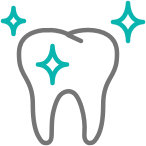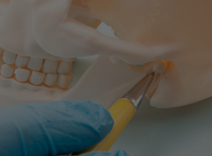TMD, or temporomandibular joint (TMJ) disorder, can lead to constant pain and discomfort, affecting almost every part of your everyday life. So what do you do if you’re living with TMJ disorder?
Depending on the underlying causes of your TMD, your dentist will recommend solutions like physical therapy or custom mouthguards. Botox offers a minimally invasive treatment option to help ease tension in the jaw and relieve symptoms of TMD. Your dentist will work closely with you to find a personalized approach that works for you.
What Is TMD?
The temporomandibular joint (TMJ) is like a hinge that connects your jawbone to the skull. You rely on this joint every time you chew, speak, and yawn. It’s a key part of your everyday routine, but it can easily become inflamed or irritated.
When the joint is not working properly, it can cause a range of uncomfortable symptoms. Excessive stress, repetitive movements, and even just grinding your teeth (bruxism) can lead to temporomandibular joint disorder, or TMD.
It’s estimated that at least 10% of the population deals with TMJ every year. Though this condition is temporary, it can significantly disrupt your everyday routine with constant discomfort and irritation.
The Symptoms of TMJ Disorders
TMD can cause a constant, dull throb in your jaw that spreads to the surrounding area. The discomfort can often distract you from tasks and deter your focus. You may have TMD if you experience:
- Jaw pain or tenderness
- Aching pain around your ear
- A grating sensation when you chew
- Difficulty chewing or discomfort while chewing
- Trouble opening or closing your mouth
- A clicking sound when you open your mouth
- Frequent headaches
Recognizing the signs is the first step to starting treatment. If you suspect you have TMD, it’s time to visit a professional.
How to Treat TMJ Disorders
Treating TMD often involves a combination of approaches designed to reduce symptoms while addressing the underlying cause of the condition. Typically, you’ll be encouraged to:
- Use custom-fitted mouthguards to help prevent teeth grinding.
- Avoid hard foods and practice good posture to reduce strain on the jaw.
- Try techniques like meditation and yoga to help reduce stress-induced teeth clenching.
- Schedule routine check-ups to catch early signs of TMD and manage them before they worsen.
However, your dentist may recommend other treatments, especially for more stubborn cases of TMD. They may suggest Botox to help manage TMD by relaxing the muscles involved in clenching the jaw and grinding the teeth.
What Is Botox?
Botox, short for botulinum toxin, is a neurotoxic protein used for a wide range of medical purposes. It has several applications—including treating TMD. While it isn’t usually the first approach to treating this condition, Botox can be effective when injected by an experienced and licensed professional.
When injected into specific muscles, Botox’s paralyzing effect can temporarily reduce their activity. This relaxation of the muscles can lead to a significant reduction in TMD symptoms, providing much-needed relief.
However, it’s important to note that Botox doesn’t address the underlying cause of your TMD. Instead, it simply works to reduce symptoms and discomfort to minimize this condition’s effect on your life. You’ll need to incorporate other treatments, such as stress-reduction techniques and using a mouth guard while sleeping, to address the root cause of your condition.
The Procedure
Botox treatment for TMD is a minimally invasive procedure performed in your provider’s office. A treatment session can last 10-30 minutes. You may feel a mild pinching sensation as your provider injects Botox into your jaw muscles.
After the procedure, you should stay upright and avoid touching the injection site to prevent the toxin from spreading to other muscles.
Some people find relief within a day of treatment, but it may take several days. You and your provider can discuss a personalized treatment plan that may involve additional treatments to best manage TMD symptoms.
Is Botox Safe?
Botox is entirely safe as long as it’s administered by an experienced professional. However, you may experience some minor side effects for a few days after your treatment.
Some common side effects from Botox include:
- Mild bruising at the injection site
- Temporary headaches
- Slight swelling
- Minor redness
- Soreness or discomfort at the site
These side effects are typically mild and temporary. If your symptoms last for more than a few days, talk to a professional.
Get Help for Your TMJ Disorder
Living with TMD can be incredibly challenging, but there’s no need to suffer in silence. By using treatments like Botox to reduce symptoms and incorporating other effective approaches, our team at Dr. Joe Long Island can help you find relief from your TMD.
We’re committed to helping you feel your best, and we’re ready to work closely with you to develop a personalized approach that suits your needs. Book an appointment with us today, and take the first step towards finding relief from your TMD.































